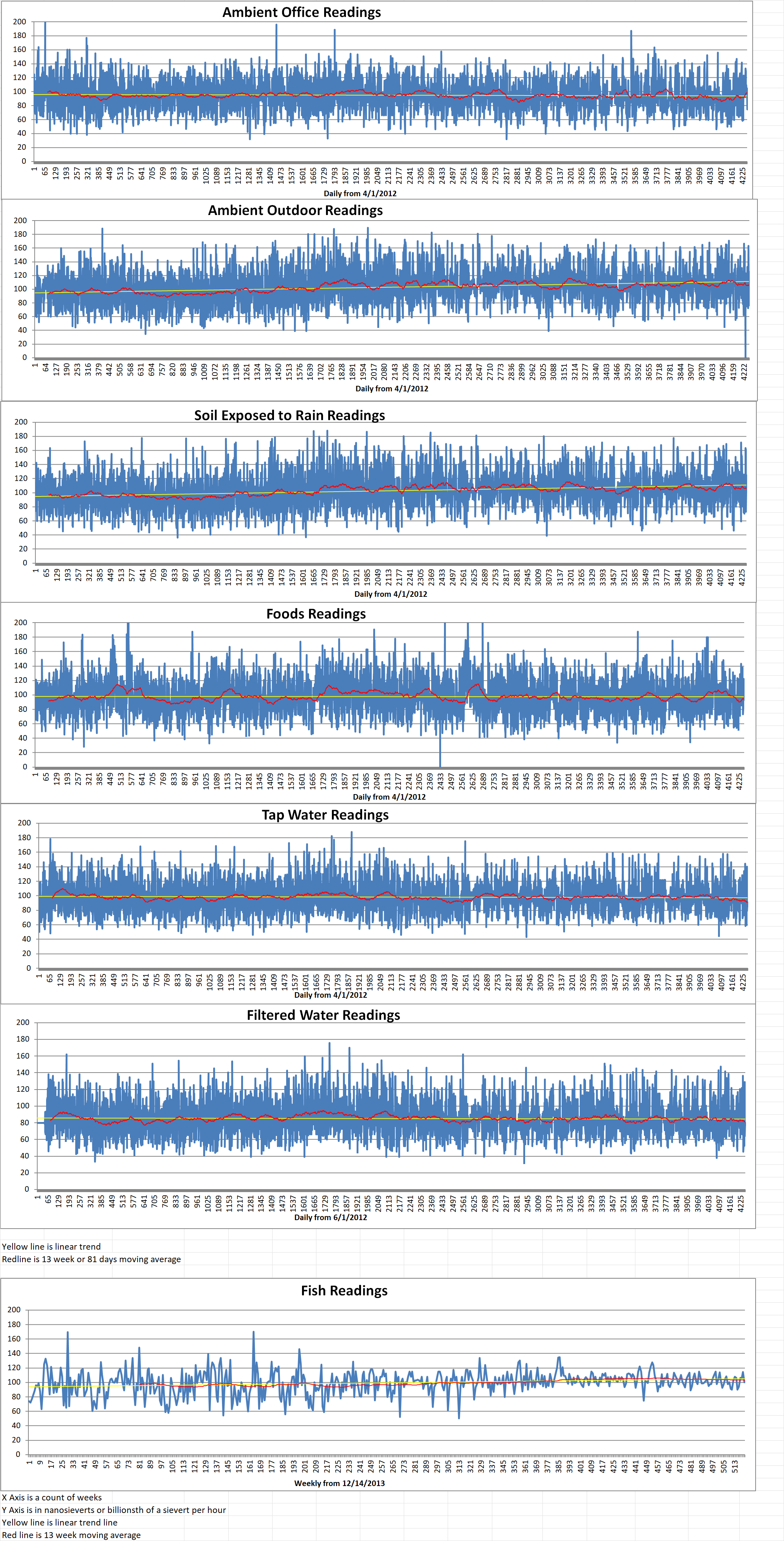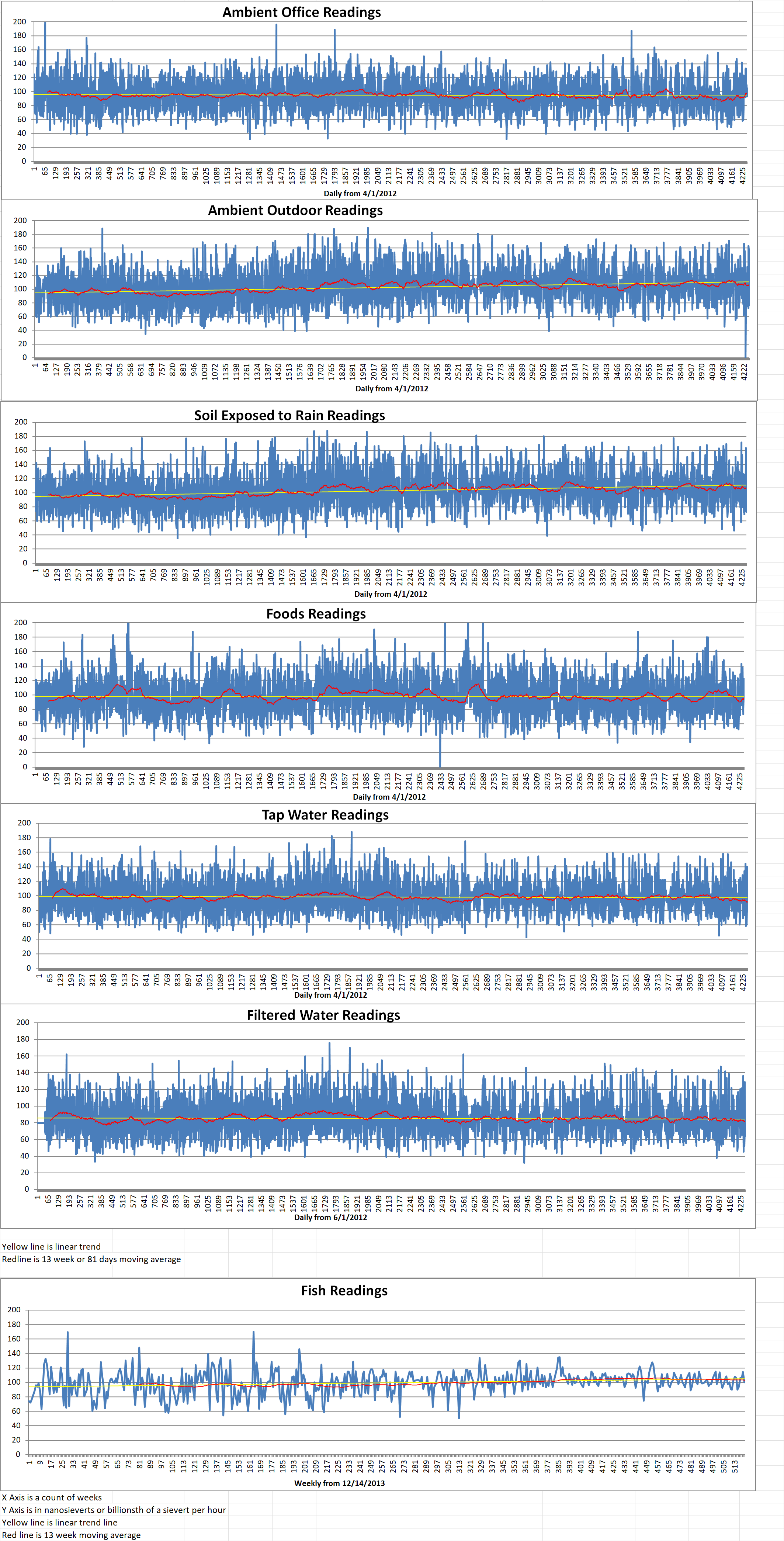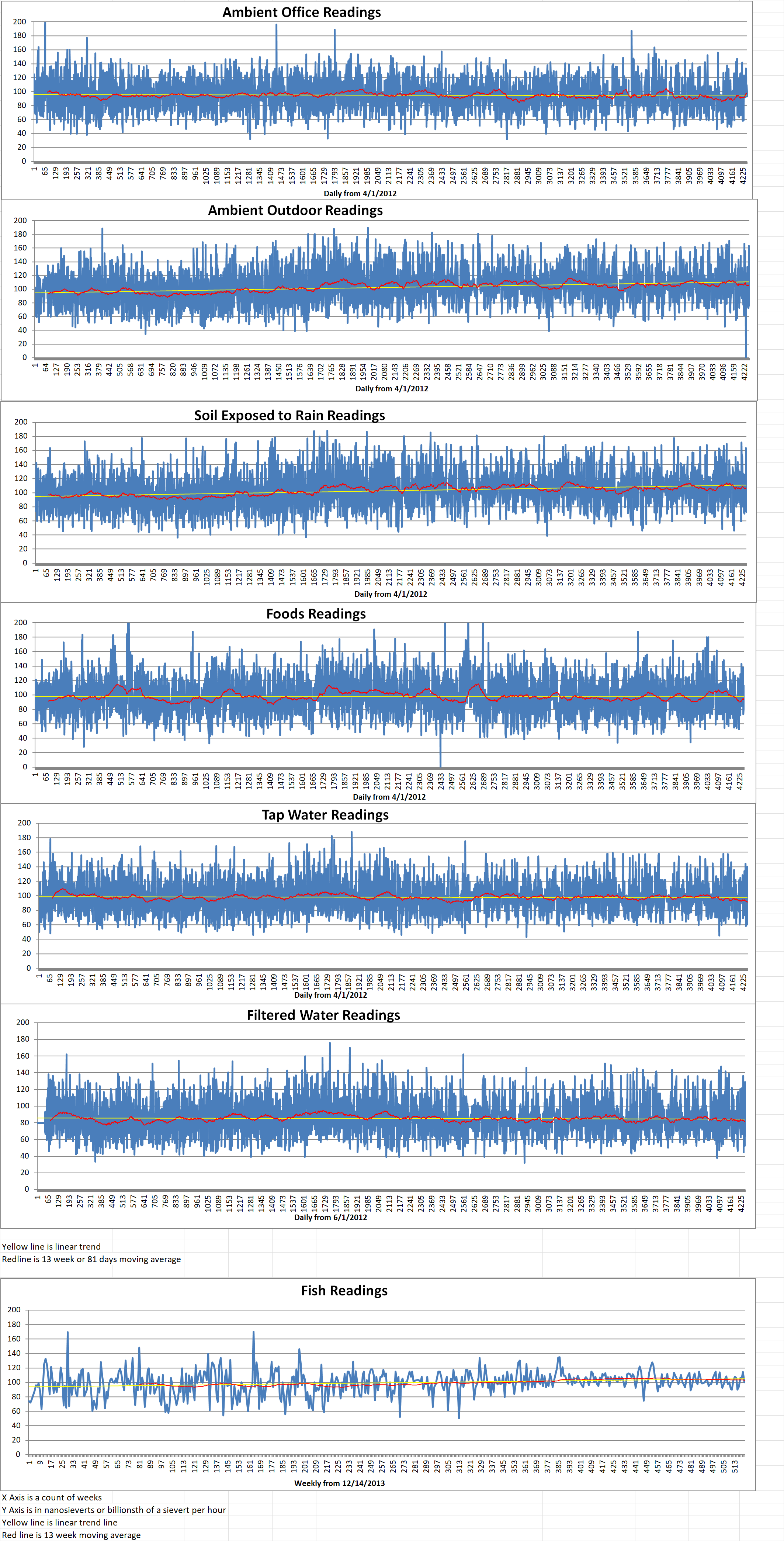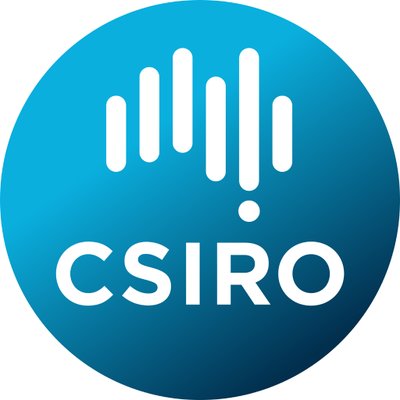Part 1 of 2 Parts
Nuclear power has had a renaissance within the last decade. With more focus on combatting climate change, there has been an increased interest in all types of energy, even if it’s not renewable.
U.S. President Joe Biden set a goal to decarbonize the power grid by 2035. His administration sees nuclear power as a critical component of that. In California, there is a bigger thirst for power combined with increasing drought reducing the amount of hydroelectric power. As a result, nuclear energy began to get the attention of Governor Gavin Newsom as well.
In 2022, Newsom worked with state lawmakers to get California Senate Bill 846 passed. It agreed to lend Pacific Gas & Electric (PG&E) one billion four hundred million dollars and help with the process if PG&E would agree to change course and request a license renewal for the Diablo Canyon Power Plant.
Maureen Zawalick is the Vice President of Business and Technical Services at Diablo Canyon Power Plant. She said, “So we were affectionately known as Team Pivot. No other nuclear plant done this, and because we’d been operating so safely, continuing to invest in the plant for reliability and so forth, it wasn’t too difficult of a pivot.”
With approvals from multiple regulatory bodies and agencies hanging in the balance, time is running out. In less than two years, the decommissioning process is set to begin. The first step is an approval was the California Public Utilities Commission.
Zawalick explained, “So they just approved us to go to 2029 and 2030, and that’s, you know, our funding source through that mechanism. The California State Lands Commission, the permits, they’re now extended to 2029 to 2030. Any permits we need from the California Coastal Commission? We’ll navigate through that.”
She continued, “The approval came with some conditions. The Nuclear Regulatory Commission (NRC) must continue to authorize the plant to operate, the utility must secure and maintain a $1.1 billion federal loan (which was approved by the Biden Administration), and the Public Utilities Commission cannot make a future determination that extended plant operations ‘are imprudent or unreasonable’.”
With regard to the NRC, if a nuclear power plant applies for licensure within a “reasonable” time and the license application is deemed complete, the plant can continue to operate during application review even if the current license has expired.
The NRC accepted PG&E’s application to restart the plant in December of 2023. This will allow the plant to continue generating electricity past its current license expiration later this year for Unit 1 and next year for Unit 2. The PG&E application asked for a 20-year extension.
Zawalick said, “The NRC process and their regulation looks at it from a 20-year time frame, from an environmental standpoint and from aging management and from a safety perspective. Okay, so there’s a tremendous benefit of asking for 20 years with the Nuclear Regulatory Commission per their process, because it gives maximum optionality for the state.”
Please read Part 2 next
Blog
-

Nuclear Reactors 1396 – Pacific Gas & Electric Is Working On Restarting Diablo Canyon Nuclear Power Plant – Part 1 of 2 Parts
-

Geiger Readings for May 23, 2024
Ambient office = 74 nanosieverts per hour
Ambient outside = 126 nanosieverts per hour
Soil exposed to rain water = 125 nanosieverts per hour
Red bell pepper from Central Market = 93 nanosieverts per hour
Tap water = 86 nanosieverts per hour
Filter water = 80 nanosieverts per hour
-
Nuclear News Roundup May 23, 2024
White House holds summit on US nuclear energy deployment world-nuclear-news.org
KAERI and Seaborg sign MoU on cooperation world-nuclear-news.org
Toshiba teams up with local firms for Polish plant world-nuclear-news.org
Takahama units cleared for extended operation world-nuclear-news.org
-

Nuclear Reactors 1395 – EPFL Working On Using Gamma Rays To Monitor Operating Nuclear Reactors
Scientists at the Swiss Federal Institute of Technology in Lausanne (EPFL) have devised and tested a new, gamma-noise method for monitoring nuclear reactors non-invasively and from a distance. The new method was tested on EPFL’s CROCUS nuclear reactor. It can improve nuclear safety and treaty compliance.
Monitoring nuclear reactors around the world to ensure that they are in compliance with regulations in international treaties is essential for safety. However, while current monitoring methods are effective, they often involve invasive procedures that can disrupt reactor operations or pose security risks.
Nuclear technology is constantly evolving, creating new challenges for nuclear monitoring. Small modular reactors (SMRs) are compact and often installed in remote locations. Conventional monitoring methods are primarily designed for larger facilities and may not be sufficiently adaptable or sensitive to the workings of SMRs.
A team of researchers at EPFL and the Paul Scherrer Institut (PSI) have pioneered a non-invasive and more efficient technique using gamma noise to monitor reactors.
They just published a paper in Scientific Reports. In this report, they show that gamma radiation, as opposed to the neutron signals used by traditional monitoring methods, can provide accurate and timely data on reactor criticality and composition without actual, physical intrusion into the reactor vessel.
The study was led by Oskari Pakari. He is a scientist with EPFL’s Laboratory for Reactor Physics and Systems Behavior and Professor Andreas Pautz with the PSI’s Nuclear Energy and Safety Research Division.
In their new monitoring method, the researchers used two bismuth germanate scintillators. These were strategically positioned outside EPFL’s CROCUS research nuclear reactor. This allowed them to non-invasively monitor gamma radiation emitted from its operation.
Gamma radiation is one of the types of electromagnetic radiation produced during nuclear reactions. Gamma rays carry information about the reactor’s state, such as changes in criticality and composition of its fuel (e.g., uranium) without directly interfering with the reactor’s operations.
The new method also utilizes statistical analysis of the variability of gamma ray detection over time. Unlike conventional methods, which rely heavily on neutrons, gamma noise analysis focuses on the fluctuations in gamma ray counts. These correlate to the fission chain reactions occurring inside the reactor. The degree of correlation provides insights into the reactor’s operational state.
The new method can provide essential data within minutes. This is a significant improvement over traditional methods, which typically require longer measurement times and closer proximity to the reactor core. The gamma-radiation method uses computational tools to analyze the temporal and spatial variance of detected gamma rays, which allows for rapid and accurate assessments of the reactor’s condition.
The researchers tested their method by extended experiments, successfully demonstrating its efficacy at distances up to several yards from the reactor core. The gamma-radiation monitoring detected prompt decay constants with minimal error. This reduced the need for direct contact with the reactor core and it also enhanced the speed and accuracy of data acquisition.
The new method provides reliable, non-invasive monitoring of a variety of nuclear reactor types, including SMRs. It could change nuclear safety protocols, facilitate better compliance with international treaties, and possibly be applied to other fields requiring radiation monitoring without direct sensor contact. -
Nuclear News Roundup May 22, 2024
What is the progress of nuclear power in Indiana? Indianapublicmedia.org
AWS granted 1,600-acre rezoning request, plans 15-building campus at Pennsylvania nuclear site datacenterdynamics.com
Biden is expanding energy tax credits for wind and solar to include nuclear qz.com
U.S. concerned about Ukraine strikes on Russian nuclear radar stations Washingtonpost.com
-

Geiger Readings for May 22, 2024
Ambient office = 105 nanosieverts per hour
Ambient outside = 108 nanosieverts per hour
Soil exposed to rain water = 110 nanosieverts per hour
Purple onion from Central Market = 122 nanosieverts per hour
Mini cucumber Tap water = 91 nanosieverts per hour
Filter water = 77 nanosieverts per hour
-

Nuclear Fusion 70 – Mitsubishi Heavy Industry Is Delivering Components To The ITER Project.
Mitsubishi Heavy Industries (MHI) has been awarded a contract to provide an additional twelve outer vertical targets for the divertor to be used in the International Thermonuclear Experimental Reactor (ITER). MHI has already delivered six of the components.
The value of the contract was not disclosed. It was awarded by Japan’s National Institutes for Quantum Science and Technology (QST). It follows the initial production order for the manufacture of six units (Unit 1 – Unit 6) received in 2021.
With the additional twelve units (Unit 7 – Unit 18), MHI will manufacture eighteen of the total fifty-four outer vertical targets. MHI said production of these units will be completed successively. Delivery to QST expected to begin in 2026.
The divertor is one of the core components of the fusion reactor in the tokamak. It removes the helium residue in the core plasma produced by the fusion reaction, unburned fuel and other impurities. It also removes high heat load and particle loading, which are necessary for stable confinement of the plasma. The divertor contains four parts: the outer vertical target is being procured by Japan, the cassette body and inner vertical target are being manufactured in the EU, and the dome being constructed in Russia.
The heat load on the divertor reaches a maximum of twenty-four megawatts of thermal energy per square yard. The outer vertical directly faces the plasma due to its structure. It is used in an extreme environment where it is exposed to the heat load and high energy particle loading from the plasma, and its structure has an extremely complex shape requiring high-precision fabrication and processing technology.
MHI has previously received orders for production for five (of a total of nineteen) toroidal field coils, another core component of ITER, all of which were shipped by 2023.
In mid-2022, the MHI delivered equipment for confirming and demonstrating the safety of the ‘blanket’ of the ITER. The blanket is one of the components that is a part of the inner wall of the fusion reactor. The testing equipment provided by MHI comprised four systems: the High Heat Flux Test Equipment, the In Box Water Eruption Test Equipment, the Be-Water Reaction Test Equipment, and the Flow Assisted Corrosion Test Loop.
MHI said that, “Going forward, MHI will continue its efforts for manufacturing of major components such as the divertor and equatorial launcher. In addition, MHI will actively support the design and development of the fusion prototype reactor which is planned to be constructed following the ITER project, contributing to the realization of fusion energy.”
ITER is a huge international project to build a tokamak fusion device in Cadarache, France, designed to prove the feasibility of fusion as a large-scale and carbon-free source of energy. The goal of ITER is to operate at five hundred megawatts (for at least four hundred seconds continuously) with fifty megawatts of plasma heating power input. It is possible that an additional three hundred megawatts of electricity input may be required in operation. No electricity will be produced by ITER.
Thirty-five nations are collaborating to build ITER. The European Union is contributing almost half of the cost of its construction, while the other six members (China, India, Japan, South Korea, Russia and the USA) are contributing equally to the rest of the cost. Construction of ITER began in 2010 and the original 2018 first plasma target date was put back to 2025 by the ITER council in 2016, but is currently in the process of being revised again. -
Nuclear News Roundup May 21, 2024
Russia says it may take extra nuclear deterrence steps if US puts missiles in Europe/Asia yahoo.com
Iran’s Nuclear Threat Escalates as US, European Allies Appear at Odds iranintl.com
Think tank close to Kremlin says Russia should consider a ‘demonstrative’ nuclear explosion yahoo.com
White House makes push for large nuclear reactors eenews.net
-

Geiger Readings for May 21, 2024
Ambient office = 99 nanosieverts per hour
Ambient outside = 105 nanosieverts per hour
Soil exposed to rain water = 108 nanosieverts per hour
Blueberry from Central Market = 112 nanosieverts per hour
Tap water = 88 nanosieverts per hour
Filter water = 80 nanosieverts per hour
-

Nuclear Reactors 1394 – Latest CSIRO and AEMO Report Concludes That Renewables Are Cheapest Energy For Australia
The consultation draft of the 2023-24 GenCost report released today confirms that firmed renewables are the cheapest form of reliable energy in Australia now and to 2030. The GenCost report is an annual collaboration between Australia’s national science agency, CSIRO, and the Australian Energy Market Operator (AEMO).
The new report further proves that the Albanese Government’s plan to deliver a cheaper, cleaner and more reliable grid through the expanded Capacity Investment Scheme, Rewiring the Nation, and the Gas Code is the cheapest and best path for our country as aging and increasingly unreliable coal-fired power continues to be retire.
The report shows that utility-scale solar and onshore wind costs including transmission and storage, are two to seven times cheaper than new coal and small modular nuclear reactors (SMRs). This reflects Australia’s huge natural advantage in renewable resources.
Solar energy continues to put downward pressure on energy prices. The recent seventy one percent drop in wholesale prices per year is due in large part to increased rooftop solar.
AEMO’s roadmap for the future Australian grid, the Integrated System Plan (ISP) released last week, also confirms that a renewable grid with hydro, batteries, flexible gas and transmission is the cheapest way to deliver a secure and reliable energy grid.
The Australian Government is expanding the successful Capacity Investment Scheme to deliver thirty-two gigawatts of new capacity for the long-term reliable, affordable and low-emissions energy system Australians deserve. Rewiring the Nation deals with NSW, Victoria, Tasmania and WA which are unlocking and keeping a lid on prices for the necessary transmission build.
The LNP’s approach in Government was to watch as twenty-four aging coal plants providing a total of twenty-seven gigawatts announced closure dates with no plan for replacement.
Their current ‘plan’ is to halt all new renewable and transmission development at the same time AEMO forecasts ninety percent of aging and increasingly unreliable coal plant will retire by 2035. They are to be replaced by SMR technology, which CSIRO and AEMO find can’t reach first full operation until 2038 at the earliest.
The Draft GenCost report also provides detailed examples of real world nuclear SMR development. This includes cost blow outs of seventy percent. However, there is currently not a single commercial SMR project anywhere in the world.
The latest GenCost report reiterates what is already known. Renewable energy is the cheapest form of energy in Australia now and in 2030, even when accounting for storage and transmission costs. The report states that “The Albanese Government is making sure more households and businesses have access to abundant, affordable renewables. After a decade of vandalism and neglect of Australia’s energy grid by the LNP, the Albanese Government is on a unity ticket with our grid operators – to deliver a secure, reliable and affordable grid with firmed renewables. CSIRO’s report also shows that renewables, particularly wind and solar, remain frontrunners as Australia’s cheapest and most effective options to deliver a reliable grid to continue to power Australian industry and households. Cheaper renewable energy generation means more clean-green jobs for Australians. We’ve set aside $3 billion in the National Reconstruction Fund to support the growth of Australia’s renewable and low-emissions energy industries and meet growing demand in international supply chains.”
CSIRO and AEMO intend to release the final report in mid-2024.
